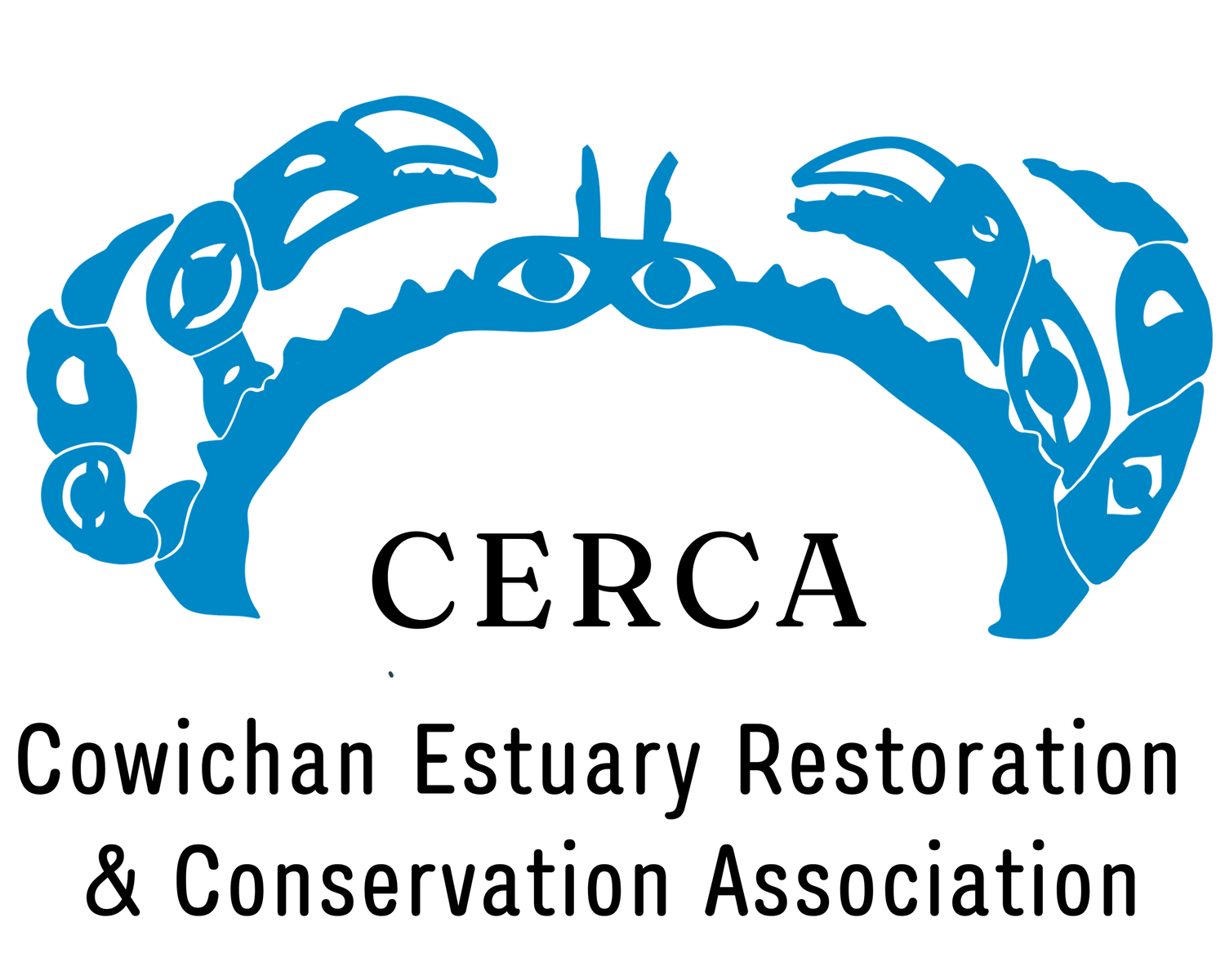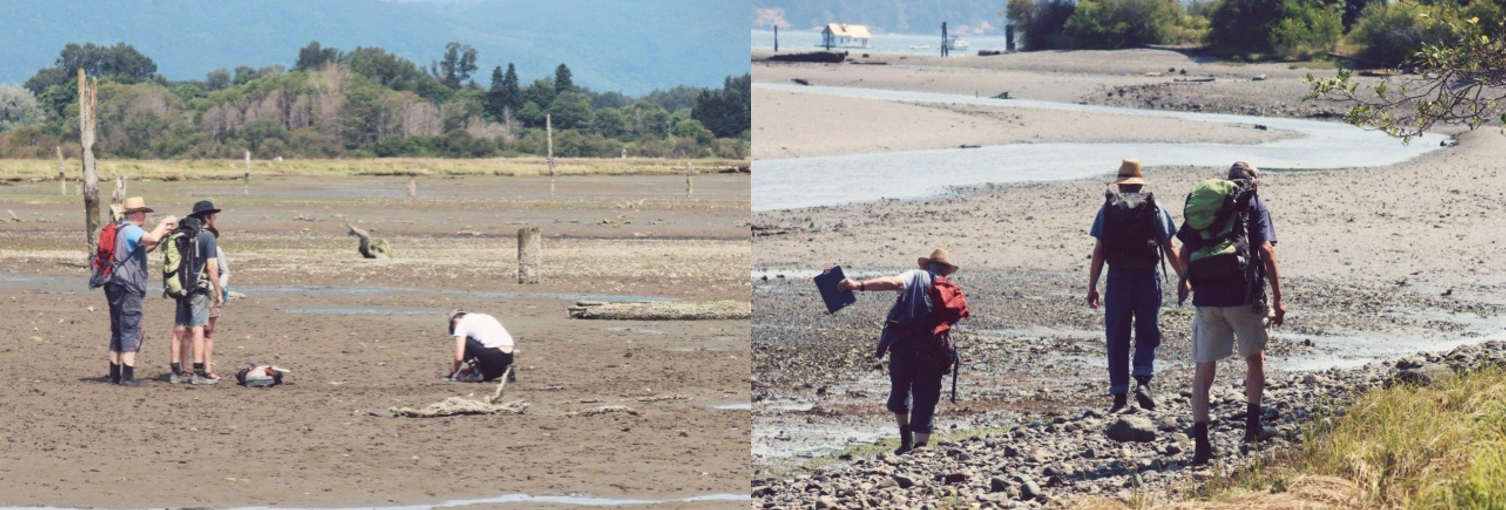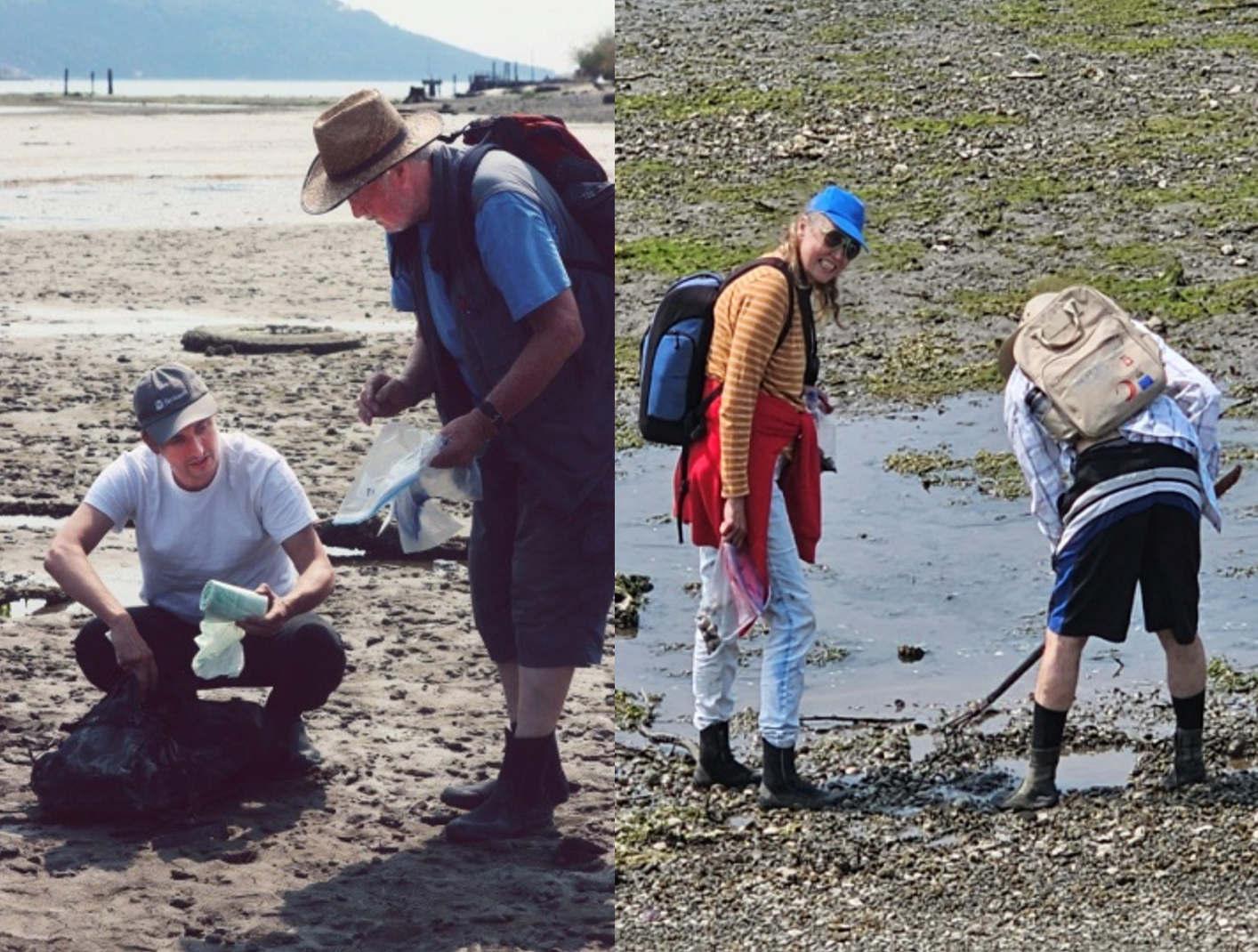Letter from the Chair for April-July 2023
WFP and Mariners Island
In my previous Letter, I reported on the drone survey we implemented in mid-March 2023 to facilitate a more precise count of logs washed up on Mariners Island since our major clean-up and log removal in 2016. The multispectral imagery from the March drone survey was used by our member Tristan Douglas to produce a high-resolution ortho-photo with a numbered grid overlay to facilitate counting the logs which amounted to more than 400 scattered across the marsh.
Log removal from Mariners Island remains a major concern and a big headache. Once saw logs are washed up onto the salt marsh of the Island they are most difficult to remove due to problematic access. Ideally, any saw logs stranded on shorelines of any of the estuary's salt marshes should be removed immediately before being washed onto the marshes where they cause a lot of damage to the vegetation and become most difficult to remove.
At current, the option of using a helicopter was refused by Western Forest Products due to the high costs involved. The next best option will be removal by an excavator, a cumbersome undertaking but successfully employed in 2016. Work will have to wait until next March/April to minimize damage to the salt-marsh vegetation, avoid disturbance during the bird breeding season, and prevent the destruction of seedpods of salt marsh vegetation vital for over-wintering birds. We are now aiming at March 2024 for the log removal. Meanwhile, I have contacted Heavy Metal Ltd. for a financial quote to remove the logs. The quote will be used to negotiate financing options with WFP. CERCA will apply for the required salvage license.
Technical Advisory Committee of the Cowichan Watershed Board
As CERCA's representative on the Cowichan Estuary Technical Advisory Committee (CETAC) I hosted a meeting at my residence in April. The focus of the agenda was to confirm the long-term goal for the estuary to be adopted by the Cowichan Watershed Board (CWB). There was agreement that the goal set in 2012 "Edible shellfish by 2020" does not cover all biota and habitats of the estuary and that the scope has to be broadened Although no agreement was reached on the final wording of a broader goal, it was suggested to focus more on the ecological integrity of the estuary, including phasing out incompatible industries.
At a second meeting of CETAC in June the BC Nature Trust made a presentation on the proposed rehabilitation of the former Dinsdale Farm property following an agreement between Cowichan Tribes, BC Nature Trust, and Ducks Unlimited to rehabilitate 70 ha of the former Dinsdale Farm into a functioning salt marsh. This is made possible by a $ 3 Million grant received for this specific purpose. A welcome news for all estuary protection advocates and CERCA in particular.
A meeting with representatives from both organizations has been arranged for July to discuss the potential involvement of CERCA in the rehabilitation of the former Dinsdale property. Although most of the work will be related to dyke removal and creating a new channel/drainage system spread across the 70 ha, CERCA could have an opportunity to participate in the establishment of a green belt parallel to Cowichan Bay Road extending the Maple Grove Park to the southern fork of the Koksilah River made possible by fill brought in from the old dyke. This also would provide an opportunity for the establishment of an attractive circuit trail to replace the current dyke trail which will disappear with the dyke removal.
Lochmanetz Property
The highly controversial "Lochmanetz" property which shares a border with the 70 hectares subject to restoration has been on the radar of Government agencies, the CVRD, and environmental groups such as CERCA. Thanks to Bernie Juurlink's recent effort one of the buildings has been condemned due to a failed sewage system. Ideally, the property should be added to the above mentioned neighbouring land that will be converted into a functioning salt marsh. But neither Ducks Unlimited nor the BC Land Trust is prepared to purchase the property. A submission by the owners to the CVRD for a camping/trailer park has been turned down once, but it appears that the proposal is still alive. CERCA has been actively supporting the CVRD in the past opposing a camp - and trailer park at this most unsuitable location. We will closely follow any news about its future use.
Crab larvae light traps and forage fish monitoring
Bill Heath continues to spearhead CERCA's participation in MABRI's sand lance habitat monitoring Project which continues throughout the year. Like in previous years this project involves Cowichan Secondary School students. The northern shore of the Westcan Terminal and Cherry Point Beach are the two locations being monitored.
Bill and I are sharing the monitoring of the Crab Larvae light trap located at the wharf of the Cowichan Wooden Boat Society in Cowichan Bay. The trap is checked three times a week. The results are submitted electronically to the Hakai Institute, the umbrella organization of this project. Not being a marine biologist, I have learned a lot about sea life, crab larvae, and all the other tiny creatures found in the light trap. Every time we check the trap there is a new surprise. It was a slow start this year with Megalopes (the first stage of crab larvae development). It was not until the second week in July that the number of Megalope exploded from a few to almost 1000 found now regularly in the trap. This project will terminate by the end of August.
Microplastic Project Phase II
Presentation to the Cowichan Watershed Board:
At the request of the Cowichan Watershed Board which had provided CERCA with a letter of support for our Phase II Microplastics Project, I gave a well-received PowerPoint presentation on the results of Phase I and the proposed changes for Phase II of the project in early June. I was accompanied by Dr. Leah Bendell, the lead scientist of the project, who expertly could respond to all questions regarding sample analysis and data processing at her lab at Simon Fraser University. The presentation sparked a lively discussion. Phase II includes a comparison of the Cowichan Estuary with the Komoks Estuary in partnership with our sister organization "Project Watershed" in Komoks. Click here to view the presentation.
Sample Collection from the Cowichan Estuary and Tributaries:
The first week of July was entirely allocated to the collection of sediment- and clam samples in the Cowichan Estuary. A very low tide during the sampling days permitted to reach sample locations at the outer edge of the inter-tidal area which had not been sampled before. All geo-referenced sites sampled in 2021 were re-visited and several new locations were added to complete a set of solid baseline data for the estuary. It will be interesting to compare the 2021 results with the findings from this year. I will report in more detail on this year's sampling design, sample locations, volunteers participating, the approach taken, and more in a separate article to be published on our Website. Bill Heath collected clams as representatives of bivalves to be analyzed for microplastic intake, an important component of Phase II. Unfortunately, we did not receive any sand lance and salmon smolts samples from the BC Conservation Foundation as planned to investigate how microplastics enter the food chain. Seining the Cowichan Estuary for these species will have to be postponed until next year. However sufficient samples of both species were collected from the Komoks Estuary where seining took place in late June. Hopefully, we will receive our bio-samples in 2024 to enable a proper comparison with the Komoks Estuary.
I would like this opportunity to thank all CERCA volunteers for their assistance in the field, especially those who carried heavy loads of sediment samples in their backpacks crossing treacherous mud traps. Except for the odd boot lost in the mud, we luckily experienced no other major losses this year compared to previous occasions when we had to rescue one or the other stuck in the mud.
A well-deserved rest!
I also would like to thank my wife Beate who helped me to collect samples from the Koksilah and Cowichan Rivers following the week of the estuary sampling. Sampling the rivers, especially the Cowichan above and below the Duncan sewage outfall is part of the project's "source" study. All samples have now been shipped to Vancouver where they will be processed and analyzed by our PostDoc Zeinab in the lab of Leah Bendell at Simon Fraser University. We have well over 100 sediment samples and a couple of 100 bio-samples combined from the Cowichan and Komoks Estuary to be processed, a major undertaking indeed!
Beate sampling the lower Cowichan River North Fork
CERCA's 2023 Bat Monitoring Project
Monitoring Groups:
In my previous 'Letter from the Chair', I reported on this year's proposed two-pronged approach, one aiming at awareness raising the other with a more scientific focus. The latter group, led by Bernhard Juurlink, Bill Heath, and Cliff Stainsby, is using more sophisticated equipment and software better suited for more precise bat species identification and data processing. The other group of eight continues to use CERCA's Echometers at eight different locations covering all major bat habitats. This year we added wireless chargers to the monitoring. This enables recording from dusk to dawn 6 nights per month at each location. The recordings are digitized the morning after each night of monitoring. At the end of the season, we will have a massive amount of data to be processed. So far I have had no luck trying to find a graduate student at VIU or UVIC to use our data for an advanced degree. But there is still hope that someone will step up to the challenge. For more information on the work of the science group, I invite you to visit the article on CERCA's Mini-Symposium published on our website:
CERCA's Bat Symposium:
I would like to take this opportunity to thank Bernie Juurlink on behalf of CERCA for organizing and moderating the well-attended Bat Symposium on June 5 at the main Lecture Hall at Vancouver Island University. Bernie was able to attract high-caliber presenters providing the audience with an overview of bat research in BC and more. For further reading on the Symposium click on the link below for a summary article on the Symposium elaborated by Steve Nazar.
New website
At our last Board meeting, Julia Bendtsen introduced the Board to CERCA's new Square Space Website. I hope that most of you have visited our new site which is lively, modern, easy to navigate and to maintain. A big 'Thank You" to Julia for her impressive work which involved many more hours than anticipated. Julia graciously donated many extra hours spent on the design and the massive data transfer from our old site to the new one. A special feature Julia added which I very much like is the search bar added to each page which quickly will take you to an article or subject matter you are interested in. Thanks for a job well done, Julia!
Contamination from Westcan Terminal
Dr. Jesse Patterson, the interim Head of the Cowichan Estuary Environmental Management Committee, accepted CERCA's invitation for a guided walk in the estuary in June. The tour was organized to familiarize Jesse with CERCA concerns and to discuss potential problem solutions on-site. Goetz and Bernie acted as "tour guides" taking Jesse along our self-guided nature trail to the Westcan Terminal where we discussed contamination and effluent issues, followed by a visit to the WFP Mill with discussions on dredging the log transport channel and impacts by grounding out log booms. On Jesse's suggestion, Bernie filed a RAPP report which triggered an official site inspection. The resulting report did not mention any of our key concerns. In follow-up correspondence with the Ministry, we were told that the Ministry of Environment had no authority to address problems related to large-scale storage of creosoted wood, uncontrolled stormwater discharge into the estuary, etc. But who is responsible if not the Ministry of Environment? This is just another example of the regrettable lack of enforcement by Government agencies on all levels. We now have brought this issue to the attention of our local MLA and MP.
WFP effluent discharge permit
In June Western Forest Products sawmill applied for an effluent discharge permit for effluents discharged into the mill pond. The mill which has been operating since 1975 never had such a permit, allowing effluents to flow into the estuary without control all these years. Bernhard Juurlink has spearheaded inquiries with the Ministry as to the nature/composition of effluent components, the volume, and times of discharge the proponent is asked to provide. Of special concern is the uncontrollable stormwater discharge from the extensive graveled section of the mill yard which enters perimeter ditches draining into the estuary. The graveled part is used mostly for the storage of milled lumber that is treated with antifoulants.
Blackley Farm Dyke Trail
CERCA's repeated requests to the Ministry's dyke inspector to allow us the removal of broom along the dyke leading to the WFP mill have been unsuccessful in the past. We now decided to join forces with the Cowichan Valley Naturalists Society and the Nature Center to submit a request for broom removal to North Cowichan Council to intervene with the new dyke inspector on our behalf. If approved we will start working on the trail in March 2024, approach WFP to revive their earlier commitment to assist us in the construction of a boardwalk along the mill site, and possibly build a bird observation tower at the end of the trail.
Financial Status
At the last Board meeting in June our treasurer Margaret provided a summary of CERCA's financial status. The current balance is $13.527. Annual dues have been paid by 45 CERCA members. A recent generous donation of $750 was received from the dentist Dr. Roozendaal. The Board thanked Margaret for her excellent work to keep our books in order, a safeguard for maintaining our charitable status.
The date for CERCA's 2023 AGM has not been finalized but it will take hopefully in person most likely in the second week of September at the Providence Farm.
I wish you all a not-too-hot rest of the summer and hopefully will see you all at the AGM.
Goetz Schuerholz
CERCA Founder & Chair
Please click here to download the [.docx] version of this letter from the chair





